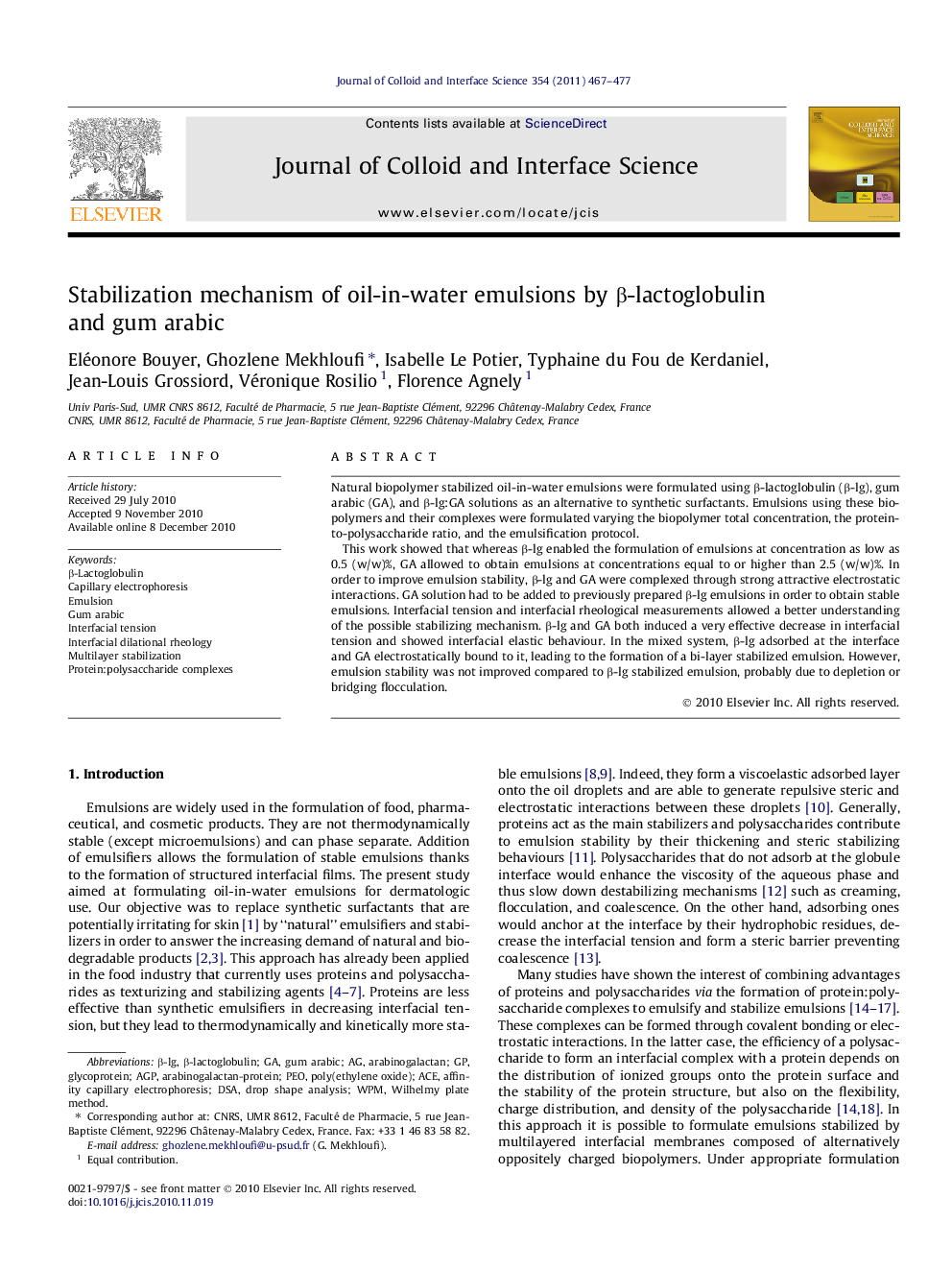| Article ID | Journal | Published Year | Pages | File Type |
|---|---|---|---|---|
| 608904 | Journal of Colloid and Interface Science | 2011 | 11 Pages |
Natural biopolymer stabilized oil-in-water emulsions were formulated using β-lactoglobulin (β-lg), gum arabic (GA), and β-lg:GA solutions as an alternative to synthetic surfactants. Emulsions using these biopolymers and their complexes were formulated varying the biopolymer total concentration, the protein-to-polysaccharide ratio, and the emulsification protocol.This work showed that whereas β-lg enabled the formulation of emulsions at concentration as low as 0.5 (w/w)%, GA allowed to obtain emulsions at concentrations equal to or higher than 2.5 (w/w)%. In order to improve emulsion stability, β-lg and GA were complexed through strong attractive electrostatic interactions. GA solution had to be added to previously prepared β-lg emulsions in order to obtain stable emulsions. Interfacial tension and interfacial rheological measurements allowed a better understanding of the possible stabilizing mechanism. β-lg and GA both induced a very effective decrease in interfacial tension and showed interfacial elastic behaviour. In the mixed system, β-lg adsorbed at the interface and GA electrostatically bound to it, leading to the formation of a bi-layer stabilized emulsion. However, emulsion stability was not improved compared to β-lg stabilized emulsion, probably due to depletion or bridging flocculation.
Graphical abstractSchematic depiction of the stabilization mechanism of oil-in-water emulsion with gum arabic through electrostatic interactions with previously adsorbed β-lactoglobulin.Figure optionsDownload full-size imageDownload high-quality image (91 K)Download as PowerPoint slideResearch highlights► β-lg and GA form a complex with a very strong affinity at pH 4.2. ► β-lg and GA displays interfacial adsorption and elastic behaviour. ► Both biopolymers enabled the formulation of emulsions. ► In mixed systems, GA electrostatically interacts with the initially adsorbed β-lg.
